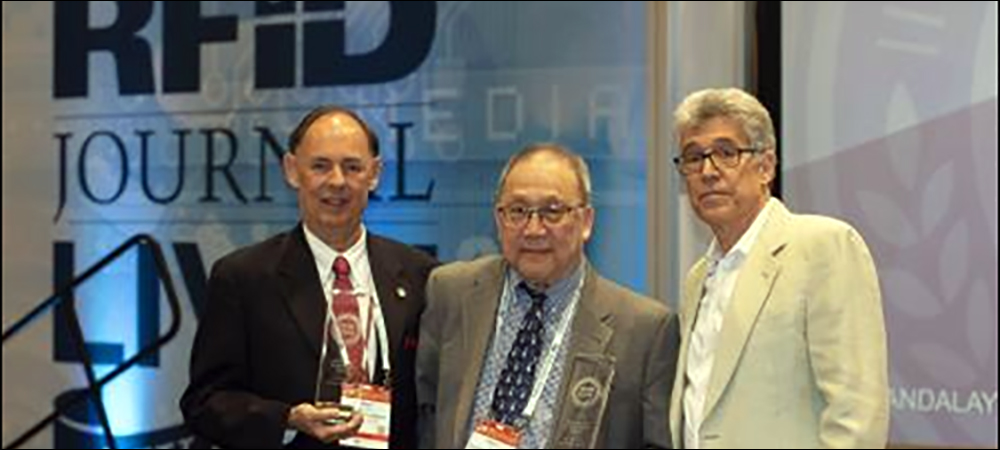- Harnessing Nuclear Energy and Managing Its Byproducts
- Security System for Better Sleep
- Bringing a Useful and Useable Technology to Use
For Dr. Yung Liu, a senior nuclear engineer at the U.S. Department of Energy (DOE)’s Argonne National Laboratory, the application of years of developing monitoring technologies for nuclear materials is just getting started. At a time when nuclear power is front and center in many alternative energy conversations, Liu is poised to assist in the deployment of a solution he and his team developed that tracks the safe storage and transportation of radioactive materials. The mission, he says, is about public safety and security, as well as the ability to continue the expansion of nuclear energy sustainably.
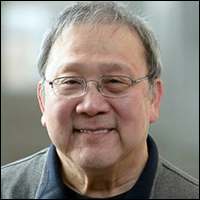
Argonne Labs’ Yung Liu
In recognition of his years spent developing RFID and other Internet of Things (IoT) technologies for this purpose, Liu received RFID Journal’s Special Achievement Award at this year’s RFID Journal LIVE! conference, recognizing his work in partnership with his program manager, Dr. James Shuler (see RFID Journal Announces 17th Annual Award Winners and RFID Journal Award Winner Session: Enhancing Safety, Security and Safeguards of Hazardous Materials). Their work focused on developing and deploying the ARG-US Remote Monitoring System, which leverages RFID sensor surveillance tags attached to sealed drum-type packages for the storage or transportation of radioactive materials resulting from nuclear energy production and other industrial applications (see ARG-US Remote Monitoring Systems For Hazardous Radioactive Materials).
Since 2010, five DOE laboratories and sites have acquired the ARG-US RFID system for field-testing and applications: the Argonne Lab, as well as Oak Ridge National Laboratory, Sandia National Laboratories, Savannah River Site and Nevada National Security Site. The solution is designed for use by nuclear facilities and logistics companies that transport nuclear and radioactive material. Throughout the last decade, Liu and his team have also developed the CommBox, as well as the Remote Area Modular Monitoring (RAMM) and TRAVELER systems. The technologies provide tracking and monitoring of high-risk and high-value nuclear and radioactive material.
Liu’s work, funded by the DOE’s Office of Environmental Management, has resulted in four patents and eight software copyrights, as well as 50 publications co-authored with his Argonne team members. His development of RFID-based solutions began in 2006, when he first saw the value of using RFID to secure shipments of nuclear material, but he has a lifetime of nuclear engineering experience. For more than 35 years, Liu has been a principal investigator, theorist, experimenter, innovator, educator and manager of various materials and engineering programs related to nuclear fission, fusion and advanced fossil energy systems.
Harnessing Nuclear Energy and Managing Its Byproducts
There are many iterations of nuclear engineering, which involve managing the front, middle and back ends of the nuclear production process. Liu earned his graduate degree at MIT, and he started his career at the front end, designing nuclear fuel for advanced reactors and fusion solid breed blankets. In 1993, he transitioned to the back end, conducting technical safety reviews for the certification of packaging designs for transportation of hazardous radioactive materials. This included ageing management for license renewal of nuclear power plants, including nuclear fuel and high-level waste. “My expertise began in the nuclear fuel,” he says, and he has focused on materials engineering throughout his career.
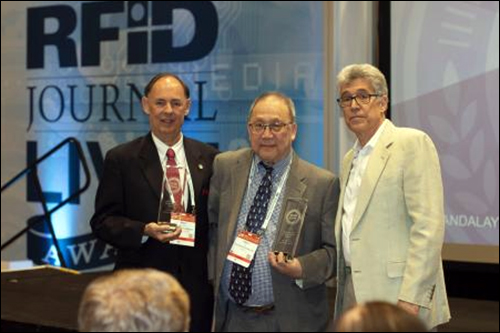
Liu (center) received RFID Journal’s Special Achievement Award from founder Mark Roberti (right), recognizing his work in partnership with program manager Dr. James Shuler (left).
The management of nuclear waste has been an ongoing challenge, Liu explains, one that requires multiple solutions if nuclear energy use expands. “I think, if nuclear energy is further adopted [as is expected in many parts of the world], there needs to be a means to manage the waste,” he says, including treatment, storage, transportation and disposal. It is now possible to reprocess spent fuel to recover useful nuclear material while reducing the amount of waste that results, but some waste remains from that process. Therefore, the environmental side of waste management awaits more solutions.
The safety of nuclear production and waste was brought into sharp focus and public attention three times: at Three Mile Island in 1979, at Chernobyl in 1986 and at Fukushima in 2011. Furthermore, uncertainties involving the environment and human activities pose risks going forward. “The question is, what happens when there’s the next gigantic earthquake or tsunami, for example?” Liu states. ” Security and safeguards protection of nuclear and radioactive material from malicious acts is another major concern after 9-11.” At the same time, he notes, there is a powerful potential for nuclear power to address climate change, as well as fossil fuel flow disruptions, such as the war in the Ukraine that has upset the transfer of natural gas into Western Europe.
Around 2006, Liu looked to efforts by the U.S. Army to manage supplies and assets via active RFID to ensure the right equipment was available for troops in Operation Desert Storm, and that it didn’t go missing. He was aware of RFID’s use for commercial purposes, such as inventory tracking for Walmart and other retailers. Nuclear material was mostly being manually tracked, a process often too costly and time-consuming to be effective. Checking the security of nuclear material containers, Liu realized, would require real-time data about the location of each container, its sealed status and other conditions, such as temperature. Thus, he resolved to test RFID as a solution.
“What we started developing,” Liu recalls, “was technology for which every drum has a tamper-indicating device,” which could transmit its own unique ID number to a reader, along with its sealed status and any other sensor-based data. Argonne Labs worked with Evigia Systems to develop battery-powered devices using active 433 MHz RFID compliant with the ISO 180000-7 standard. Power management for the device posed a key challenge, so Liu developed a battery-powered RFID transponder with a lifespan of approximately 10 years. The tags needed to be sufficiently radiation-tolerant, as demonstrated by Argonne in its onsite irradiator facility.
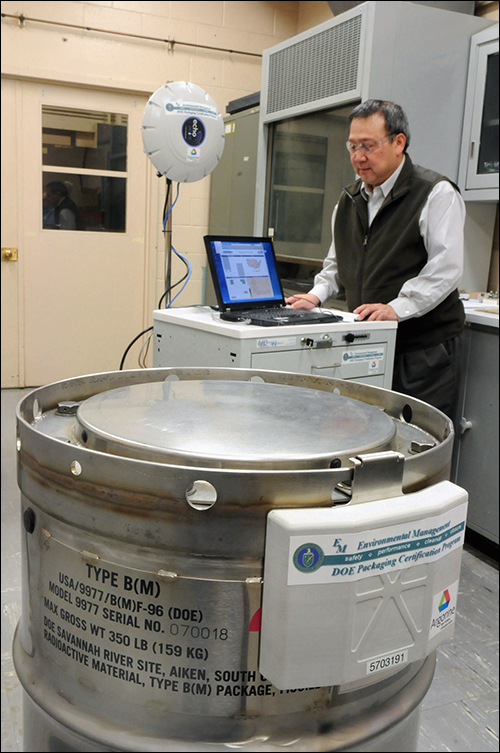
Yung Liu examines data on his laptop from the RFID system developed at the lab. The technology allows users to track nuclear materials and remotely monitor environmental and physical conditions. (Photo: Argonne National Laboratory)
Security System for Better Sleep
When Argonne Labs was summoned to assist with the Fukushima nuclear accident, Liu reviewed the proposed Japanese package design for transfer of spent fuel from reactor storage pools. He and his team began developing an IoT-based solution. Once the nuclear accident occurred, Liu says, “We realized we need something else, so that’s our second platform.” The Remote Area Modular Monitoring (RAMM) system resulted, developed in partnership with Cleveland-based technology company Embedded Planet.
The solution is designed to monitor nuclear fuel cycle facilities, such as fuel enrichment and manufacturing sites, nuclear power plants, spent fuel storage installations, radiological facilities and geological repositories. TRAVELER, a derivative of RAMM, provided tracking and monitoring of nuclear cargos in rail, truck and maritime shipments. RAMM for Temperature Measurement (RAMM-TM) is a derivative of RAMM that was developed for the detection of gas leakage from welded canisters containing spent fuel.
According to Liu, the performance of RAMM-TM in gas leakage detection has been demonstrated jointly with researchers at the Central Research Institute of Electric Power Industry (CRIEPI), under a cooperative research and development agreement between Argonne and CRIEPI, in Japan from 2019 to 2022. The potential application of RAMM-TM as an advanced surveillance technology for the extended storage and transportation of spent fuel, he says, is being recognized by the International Atomic Energy Agency, in a document to be published later this year.
Liu sees the ARG-US solution as an enabling technology as nuclear power proliferates, and he likens it to a home security system. “Why would people want to get a home security system?” he muses. “So that they can sleep better.” If a disruptive event occurs, users can be ready to address it. “I think our system is the same thing. The way I put it, it is there to help you sleep better because nuclear facilities are being monitored in real time, 24 hours a day and seven days a week.”
According to Liu, the system’s battery-powered capacity ensures that even if a power failure occurs at a nuclear facility, data is continually available about the stored material and its status. That’s a safety benefit in the long term, he says, while providing the information needed by emergency responders entering a facility during an incident. Liu says he isn’t ready to rest on his laurels, and that he won’t be until he sees the technology providing the benefits he envisions for more nuclear facilities worldwide.
Bringing a Useful and Useable Technology to Use
Argonne Labs will continue to demonstrate the ARG-US technology, as well as educate and inform potential users and stakeholders, though Liu says his team does not make unrealistic promises. “If I work on developing a technology or service,” he notes, “I want it to be useful, number-one,” but the second phase is for it to be usable.
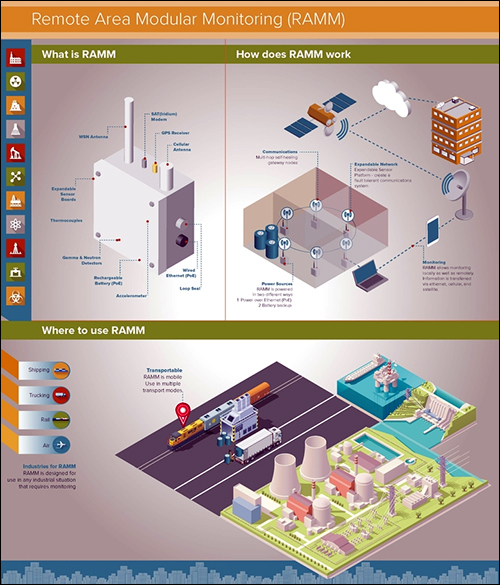
The ARG-US solution
Too often, Liu explains, new, disruptive technologies can be developed that work well at the prototype stage or during in-house testing but fail to overcome institutional obstacles in the real world. He finds, however, that live deployments at facilities throughout the United States have demonstrated the usefulness. That brings Liu’s efforts to the third phase: to be used. That, he says, may require testing and application in real-world scenarios as the system is installed in private facilities, or with logistics providers.
“There are many, many scenarios or potential situations that can occur in the actual environment,” Liu reports, “and only when you use the technology do you find out” how it works or how it needs to be modified and improved to enhance system performance and reliability. Potential end users will need to identify what they will do with the data the technology provides, he says, adding that it’s a question of what information needs to be collected and how to use it. Technology, in general, can generate enough information to overwhelm users, Liu says. “You have to think about the information on the sensor side,” he states. “In reality, what is useful? What is the information that matters?”
Logistics companies could offer the ARG-US system to track packages of nuclear and radioactive materials they transport, as part of the services they offer to customers. What’s more, insurance companies could potentially provide benefits for those who use such a system. With sensors, the ARG-US solution could track not only where containers are located, but also the environments to which they are exposed—for instance, vibration or impacts based on accelerometer measurements. Argonne Labs has developed a Web-based geofencing application user interface for the TRAVELLER, which will facilitate the implementation of transport security plan for nuclear and radioactive materials.
Liu says the future looks promising for nuclear energy if the hazards and storage risks can be addressed. “People realize that climate warming means we have to reduce the carbon footprint,” he states, “and all the fossil fuel, energy-generating sources do not help carbon dioxide levels.” The challenge, he adds, is to harness this tremendous energy source while ensuring the safety, security and safeguards of nuclear materials, as well as protecting the personnel and public around them.
Key Takeaways:
- With support from Argonne Labs and Department of Energy team members, Yung Liu is ushering in a nuclear waste-management system to ensure the safe storage and transportation of spent material.
- Liu is looking ahead to the solution’s installation by nuclear facilities, and he assists with those deployments to ensure their effectiveness.

